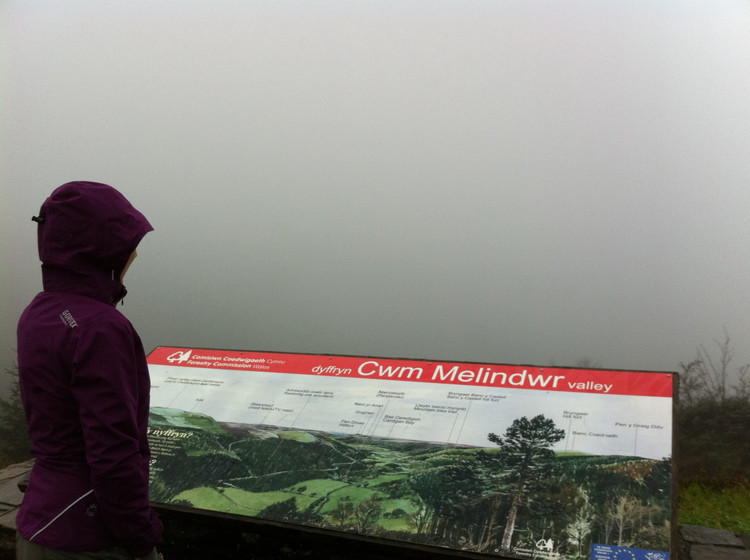We headed back to the southern half of God’s own country last weekend, for a couple of days in Lampeter and the surrounding area. Our drive through mid-Wales from Telford across to Aberystwyth was very scenic but also incredibly wet, with the rain coming horizontally and very rapidly at the high point of Bwlch Nant yr Arian. Dropping towards the coast the weather cleared a bit, and by the time we arrived in Penbryn it had become merely inhospitable, as opposed to vicious. We set off for a run along the Ceredigion Coastal Path with the strong westerly wind fortunately blowing us landward rather than towards the cliff edges.

Occasional showers passed over, but the wind remained strong and was blowing plumes of foam onto the cliff tops where they fell like some kind of bizarre snow. We continued past the very scenic Llangranog as far as Ynys Lochtyn; at the cliff tops here we watched the waves breaking over the rocks below, before a particularly enthusiastic squall prompted us to call it a day.

We retired to the lovely Falcondale Hotel near Lampeter, with the intention of visiting the Black Mountains the following morning. Welsh weather had other ideas, and to avoid looking at the inside of a cloud all day we returned to the coast. This time we had a wander south from Aberaeron, being buzzed by a Red Kite in the process, before heading to New Quay. There’s a resident pod of Bottlenose dolphins in Cardigan Bay, and it was our intention to walk along the coast path and see if we could spot them. We needn’t have worried overly, as within two minutes of us getting out of the car they appeared in the bay by the harbour. We sat on the harbour wall and watched them for a while, and were treated to a couple of jumps as well as the “industry-standard” glimpses of dorsal fin. Our mission accomplished without walking more than fifteen yards, I celebrated with proper seaside chips.

The afternoon saw the return of the rain, which didn’t bother me because I was getting muddy on my bike in Brechfa forest. The trails here are described in Mountain Biking Britain as “world class“. Alas their signage is not, and so what should have been a 60:40 split of single track and fire road turned into a 5:95 split instead. Over 19km I was not impressed. Looking back at a map now it’s clear where I went wrong (i.e. where the signs are missing) but I think the map could be improved too – the addition of the big river in the valley bottom would aid navigation no end!

Our final day continued the wet theme, although the wind had died down. Instead of another coastal jaunt we decided just to stop on the way home, at the Forestry Commission visitor centre at Bwlch Nant yr Arian. On our outward trip this had been the scene of the worst weather, whereas on the way home it was just embedded in cloud. The signage suggested that there are excellent views on a day with visibility, but alas we can’t confirm that from our visit.

We wandered around one of the trails before stumbling across the lake where the Forestry Commission have a Red Kite feeding station. Kites used to be very common in the UK, being effective scavengers who cleared up a lot of waste in towns and cities (hence their old name “shitehawk“). They were subsequently declared vermin in the 16th century and populations plummeted. They disappeared entirely from England and Scotland, but managed to cling on in mid-Wales. They’re on the way back now though, as is demonstrated by the fact that “on a good day” you can see up to 150 at the feeding station at Bwlch Nant yr Arian! Timing issues meant that we couldn’t stay to witness that, unfortunately. Instead we bumbled home, accompanied by Radio 4, after a lovely weekend in a very nice hotel spotting various types of wildlife. I think I’m becoming middle-aged, but I like it.